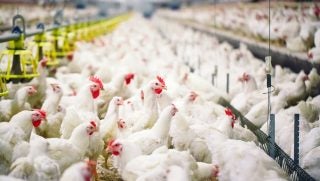There are at least three large challenges facing farmers today that require the skills of adapting-to and managing uncertainty. First, we live in a world where a small fraction of the information available to us is factual. The internet consists mainly of opinions, and marketing specialists ensure we see what companies want us to see. In contrast, peer-reviewed research is seldom marketed or seen by those who are most likely to benefit from it. Secondly, there is a great deal of inherent uncertainty in agriculture due to scientific limitations and human unpredictability. Factors such as the weather and world commodity markets are still volatile and almost impossible to plan for. This requires a plan that is solid, but not so rigid that it cannot adapt to a variety of circumstances. Lastly, there are still many gaps in our knowledge base regarding crop production. For example, the vast number of factors that influence the billions of soil microbes in a tiny area may prevent us from ever truly understanding or precisely managing soil health like we do with weeds or insects. So how do we make the best decisions to increase yield as well as our farmers’ bottom lines? I believe the answers include prioritization, humility, and forward thinking.
The concept of prioritizing our farm operations is infinitely more simple than actually developing a complete hierarchy of priorities. However, I still believe it should be attempted and adjusted as needed. When determining where to start in terms of farm management, I believe starting simple is always best. Since I’m a soil scientist, I’ll use one of the easiest soil examples: pH. Before deciding to do anything new or experimental, be sure your pH is correct across your field. This does not mean taking just one soil sample in an 80-acre field! As with many soil properties, pH will often vary across soil types, slopes, etc. Why pH first? Because it affects nearly every other aspect of crop growth, and it’s one of the easiest and cheapest fixes you can make (in other words, the biggest return for your dollar). After pH, move to things like precise nutrient management, soil organic matter increases, etc. If all these things are managed effectively and your yields are already well above average, then you may consider more advanced or risky strategies to further increase yield. Admittedly, these are very oversimplified examples. My main point is that in general it is best to start with the tried-and-true science and work your way up to the intriguing new options, not the other way around.
My reference to humility can be summed up simply by stating these universal truths: We don’t know everything there is to know about agriculture, and we never will. By admitting you don’t know the answer, you allow yourself the possibility of seeking it out, instead of assuming and making a mistake. It is entirely possible that the answer may not exist for a specific problem yet, and if others agree that the answer is important enough, then collaboration can lead to solutions. Conversely, a new product or method may work extremely well, and you’d like to find out why in order to reproduce your results. In either case, land-grant institutions, consultants, and/or on-farm experimentation can come into play.
Speaking of research, we must continue to be forward thinkers to effectively increase farm profits, produce new technologies, and advance agriculture at the pace necessary to keep up with world demand. It is no longer enough to “stay current,” we need to take it a step further and work together to push the boundaries of crop and animal production. First and foremost, we need to keep safety and good stewardship in mind. Secondly, we need to always remember that farming is a business and farmers must succeed in order for the agricultural community as a whole to succeed.
Famers have always been a group with impressive ingenuity, creating machines, implements, and methods to fit their needs. In today’s world, this is becoming both easier and harder at the same time. Advances in communication and information transfer make sharing ideas faster and easier than ever. On the other hand, technology is advancing at a rate that makes it nearly impossible to manage a farm and come up with the next high-tech or duplication-worthy idea. Those jobs are now primarily done by engineers, large companies, and computer programmers. Therefore, in my mind, the best thing a farmer can do is make known the areas in which he or she thinks would be most helpful to streamline operations, adapt to uncertainty, or simplify complex management decisions. The products and services that thrive in the U.S. are based on famer spending, so use capitalism to your advantage and help shape the future of agriculture!
Spartan-state native Michael Swoish is a Michigan State alum who’s currently pursuing his Ph.D. in soil science at Virginia Tech. Michael has taught classes on precision agriculture and has traveled the country to get as much dirt time as possible.



